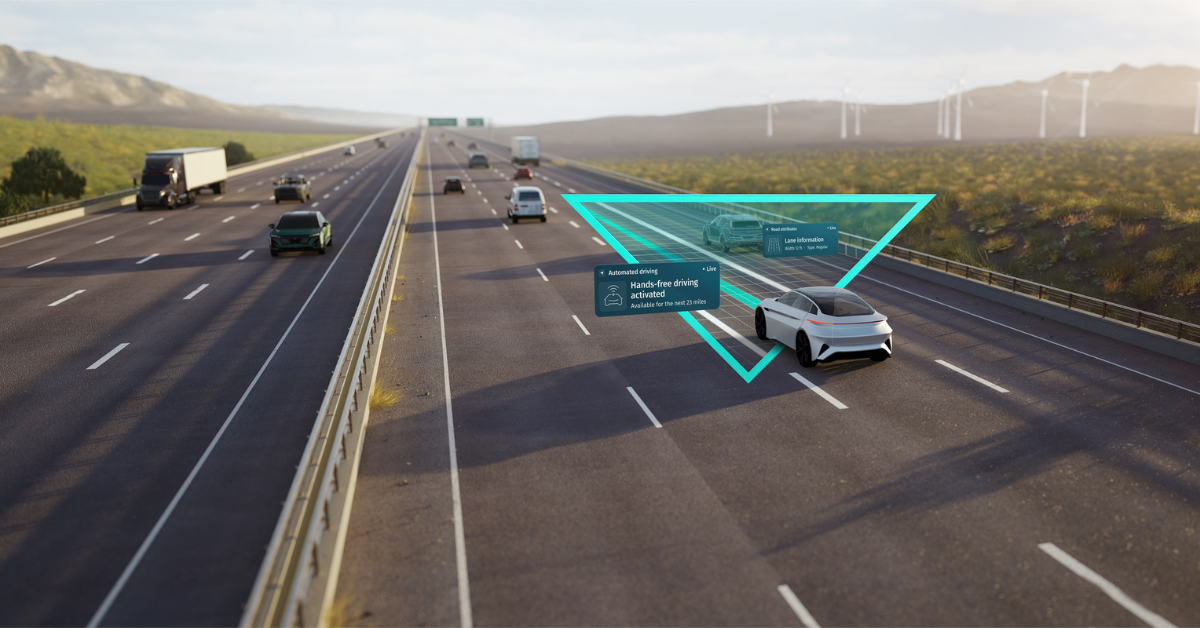The concept of Vision Zero originated in Sweden in the early 1990s. Its goal was inarguably noble: to drastically reduce the number of deaths and serious injuries on our roads. On average 1.3million people are killed in road accidents every year, with another 20-50 million injured. Taking the worst-case scenario, this is not far short, by way of comparison, to the entire population of England being killed or seriously injured on the roads every year. For reference, Transport for London’s Vision Zero goal is no road deaths in the capital by 2041 – in 2019 there were 125.
The Swedish parliament adopted Vision Zero as a policy in 1997 and initially saw those numbers decline drastically but, as is the case with the majority of countries and cities that adopted it, those encouraging figures have somewhat levelled off in recent years.
New York City is a prime example. After publishing its VZ Action Plan in 2014, road deaths fell from 299 in 2013 to 200 in 2018 – but in the first four months of 2019 there had been an increase in KSI (killed and seriously injured) by over 30%. What are some of the contributory factors to the seemingly global stall?
It’s also noteworthy that different countries approach the subject differently – the Netherlands’ Vision Zero focus has been more on traffic calming and reducing speed limits, whereas Norway has centred its VZ policy in reducing private car ownership levels.
So what’s next for Vision Zero? Intertraffic spoke to two experts in the field: Fernando Ribeiro of Lindsay Transportation in Rotterdam, and ITS mobility GmbH’s managing director, Steve Schneider. For them both the reduction of the potentially disastrous consequences of driver errors is absolutely key.
Harmonisation of road safety!
“By enabling vehicles to communicate with each other as well as with the surrounding infrastructure and other road users, C-ITS (co-operative ITS) can drastically reduce human error, one of the biggest causes of traffic accidents, while improving the efficiency and comfort of traffic,” explains Schneider, who is also Coordinator of the C-Roads Germany project.
“The progress and harmonisation of C-ITS technologies has shifted the discussion from purely technical issues to the level of services. This means that C-ITS services are already real, reliable and available today and serve as a trigger and driving force for a new era of road safety in Europe. The EU and Member States have been at the forefront of this technology, which has led to it already being deployed in practice today.”
Since 2016, roads across Europe have been equipped with smart infrastructure to support European travellers, with safety at the heart of the discussion.
“Starting with hotspots along motorways and cities, a total of 6,000 kilometres of road sections have been equipped with ITS-G5 units, while a total of 100,000km are covered with mobile/long-range technologies. At the same time, more than 3,000 hours have been invested in extensive testing of vehicles and services across Europe, closely coordinated with representatives of key OEMs. With both infrastructure and OEMs ready, the coming years will focus on improving coverage and service quality. The focus will increasingly extend to urban areas and multimodal use cases.
Over €500 million of EU funding has already been allocated to ITS projects under the European funding programmes, he continues, representing investments of over €1.3 billion.
“More than 30% of this CEF funding is going towards the development of C-ITS. Progress in this area is the result of a combination of European funding and the financial commitment of Member States, road operators and other stakeholders, all working together towards a unified approach for a harmonised and interoperable deployment of C-ITS services.”
As for how much the road networks rely on the advancement of technology, Schneider is unequivocal in his belief that a vision of zero road deaths can only be achievable if every element works together.
“Safety is the main reason for road operators to invest in the provision of C-ITS services. As much as vehicles and information services rely on high-tech, so do today's roads,” says Braunschweig-based Schneider. “Modern infrastructure design goes far beyond paving and marking - rather, it involves the intelligent placement of roadside devices and sensors along key road segments. The technologies consist of a mix of dedicated short-range frequencies (ITS-G5 standard) and cellular network-based communications to bridge greater distances. Together with networked vehicles, these roadside devices form the basis for individual services to improve road user safety.”
The benefit is simple: road users are often confronted with potentially dangerous situations. By improving the intelligence of roads, vehicles and traffic management, C-ITS services defuse these dangers.
“These services already show you the right information at the right time, even across borders, because it has been possible to prepare the road infrastructure and cooperate with OEMs on a large scale. Although C-ITS today is primarily focused on road safety, the technologies and processes are also a crucial foundation for connected automated driving in Europe. As such, they hold additional potential to achieve the Vision Zero goal.”
The Forgiving Highway: thinking differently, living longer
For Fernando Ribeiro, director of sales, EMEA, for Lindsay Transportation based in Rotterdam, the whole concept of Vision Zero dovetails rather neatly with his company’s four main pillars of activity. However, with the initiative now over 25 years old, Ribeiro is of the opinion that this might be the perfect time to revisit the initial goals and bring them into line with the pace of technological change.
“We are helping to move the world forward by creating the most innovative products and fully integrated systems. Whether looking to reconfigure a roadway or install lifesaving additions, Lindsay infrastructure options strive to keep roads and the people on them moving safely.”
Lindsay’s range of leading crash cushions, end treatments and more by the top global safety standards.
"We all know the hazards of the road—from distracted drivers to unforeseen accidents—but we're here to limit their impact. We provide a complete line of permanent and temporary crash cushion options that put everyone's safety first. That is the "Forgiving Highway" concept: Roads prepared for the driver's mistakes, reducing the severity of the impact and saving the driver life."
What the authors of the original Vision Zero documentation in the early 1990s hadn’t entirely foreseen, however, was the advent of autonomous vehicles. From a safety perspective autonomous and semi-autonomous vehicles have changed the whole outlook and redefined what road safety actually means – particularly from an equipment point of view, as Ribeiro discusses.
"We need to ensure that our products communicate well with the Autonomous vehicle. We are looking for alternatives to understand how our crash cushion or our road marking tape can be recognized by autonomous cars, and that's why we are investing in IoT in our devices."
The rise of the autonomous vehicle should, though, ultimately see a decline in accidents caused by human error. And with north of a million people dying in traffic incidents every year this (still) Utopian ideal can’t become a reality soon enough.
"Accidents largely only happen because of human behaviour," states Dutch-based Brazilian Ribeiro. "I remember back in South America; all the associations there used to claim that 85% of accidents are because of human errors. If we have autonomous vehicle driving and our highways, it's unlikely to have the same number of accidents that we have today. The autonomous car should follow the speed limit, be more prudent, and generally not make the mistakes we all make driving every day. But I don't know how close we are to that reality. "
The simple equation of less human drivers = less accidents = less people dying on the highways is inarguable, if some distance away on the horizon, but Ribeiro believes that another huge contributory factor to reducing accidents is for travellers to be given more mobility options.
“We have to explore different ways of being mobility. I moved to the Netherlands 18 months ago but I only bought a car after one year. I’ve been coming into the office by bike, only a 10-minute ride, and I feel really safe cycling here because we have bike lanes all over the city. But that’s not the case everywhere, so if you can remove some of the cars from the highways we will be also contributing to Vision Zero because of that equation: less cars, less accidents, less accidents, less fatalities."
With Covid-19 finally appearing to loosen its grip on the planet and with Intertraffic now only a matter of days away from opening its doors for the first time in four years, Ribeiro senses that the re-opening of society (and business) is the ideal time to push Vision Zero further up the mobility agenda.
“We are starting to move back to normal and we now can have in-person meetings again, so it’s the perfect opportunity for the whole industry to be together discussing what we can do to achieve Vision Zero. Publishing something nice on social media is all very well. ‘I support Vision Zero.’ OK, that’s great, but what are you doing? Are you driving discussions? Are you developing new products to save lives? Are you part of the community that you live in? So I think those are the things that we need to bring up.”
Finally, considering how much of our lives have changed since the mid-1990s (for all intents and purposes Vision Zero predates email), how relevant is Vision Zero’s stated targets in 2022 as opposed to when it was originally created and drawn up? Global road deaths in 1990: 1.1m. Global road deaths in 2019: 1.35m or approximately one every FOUR seconds. Road deaths are still the number one killer of humans aged 5-29.
"Vision Zero has been with us for almost 30 years," says Ribeiro, "and as you said, the world is a different place. I still believe the vision and the goal should be zero, but how achievable it is a great question, and I don't know the answer. But I believe that, as an industry, we should work together to achieve the goal. But that is not only manufacturers, but that should also include the DOTs, governments, highway concessionaires, regulatory agencies, and society."
Ribeiro believes that for Vision Zero to come close to its original targets there needs to be a change of approach to road safety from all parties.
"It's not only about the driver, but how can we change our mindset? As a leader of a company, can I allow my team to work from home twice a week? Can we go to the office by public transportation or bike? That's something that we should be discussing as well.
Protecting hazards and applying the forgiving highways concept is crucial to saving lives, but the discussion has to be bigger than that. So, how can we think differently?”
.png?h=400&iar=0&w=1400)


